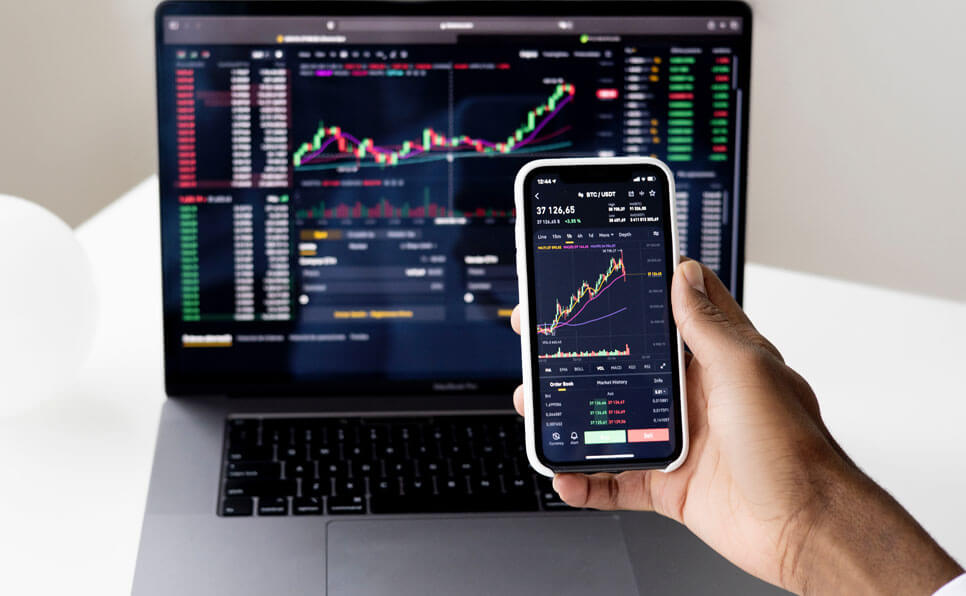Meta: Explore how technology redefines business, enhancing investments and operations.
In the rapidly evolving landscape of modern industry, the confluence of technology and business is transformative. It is reshaping how companies operate, driving innovation at an unprecedented pace, and redefining the competitive dynamics across sectors. Since understanding this intersection is crucial for any business aiming to thrive in the future economy, this article explores various technologies driving business today.
Key Technologies Redefining Business Practices
Technological advancements and digital platforms are revolutionizing various business sectors. For instance, in the financial services sector, technology helps to reduce fraud and build trust. It also allows access to novel investment opportunities that were once beyond the reach of average investors. For example, the list of investment opportunities on wallstreetzen.com shows options like investing in high-end art and private credit markets.
In healthcare, it is improving patient care, while retail and e-commerce platforms depend on technology to optimize inventory and personalize shopping experiences. Thus, these innovations are reshaping how industries operate, providing businesses with the tools to improve efficiency, enhance customer service, and increase profitability.
The following are some of the technologies shaping modern business operations:
Artificial Intelligence and Machine Learning
They are reshaping decision-making processes across industries, providing insights that help sectors like finance and healthcare make more informed and precise risk assessments and diagnostics.
These technologies are also revolutionizing customer interactions in retail and e-commerce. They enable businesses to understand and respond to consumer behaviors and preferences, personalizing the shopping experience and boosting customer loyalty and sales.
Additionally, AI’s ability to predict demand, optimize delivery routes, and efficiently manage inventory reduces operational costs while enhancing service delivery in the manufacturing and logistics sectors.
Blockchain Technology
Blockchain technology is enhancing the transparency and security of transactions, particularly in the financial services sector.

This technology also impacts the supply chains of the food and beverage industry by providing immutable, transparent records of product origins and safety compliance, thus ensuring consumer trust and regulatory compliance.
Internet of Things (IoT)
The Internet of Things is transforming asset management and operational efficiency. For instance, in transportation and logistics, IoT devices enable real-time tracking of vehicles and cargo, improving the efficiency and reliability of delivery systems. In manufacturing, IoT sensors are invaluable for monitoring equipment performance and maintenance needs, allowing for predictive maintenance strategies that minimize downtime and extend equipment lifespans. This real-time data collection streamlines operations and significantly enhances overall business efficiency.
Robotic Process Automation (RPA)
This automation is streamlining repetitive and time-consuming tasks across various sectors. In insurance and banking, for instance, RPA automates routine tasks such as claims processing and compliance reporting, allowing employees to focus on more strategic activities. This automation extends to the healthcare sector, where RPA manages patient data entry and administration, reducing errors and improving the efficiency of patient care.
The Challenges and Potential Solutions at the Intersection of Business and Technology
Navigating technological innovations in business sectors, while brimming with opportunities, also presents significant challenges. Organizations must adeptly manage them to harness the full potential of the transformation. Some of these challenges are technical, while others have considerable social and operational implications.
Privacy Concerns and Data Security Issues
As businesses rely on data to drive decision-making and personalize customer experiences, they face heightened data security and privacy risks. The proliferation of data across multiple platforms can lead to vulnerabilities where unauthorized access and data breaches may occur, compromising consumer trust and corporate integrity.
Additionally, the global nature of technology and data storage complicates compliance with various privacy regulations, such as GDPR in Europe or CCPA in California, requiring businesses to invest heavily in their cybersecurity measures and data governance practices.
Workforce Displacement and the Skills Gap
Automating routine tasks through technologies like AI and RPA brings the challenge of workforce displacement because these technologies can render traditional roles obsolete.

This shift creates a skills gap in the labor market, with a growing demand for tech-savvy professionals adept at managing and integrating new technologies. Businesses must navigate this transition by investing in training and reskilling programs to prepare their workforce for new technological realities, ensuring smooth integration and minimizing disruption in their operations.
Integration Complexities and Legacy System Constraints
Many organizations operate on legacy systems that are not compatible with the latest technological innovations. Integrating new technologies into these existing systems can be complex, costly, and time-consuming.
The siloed nature of business departments often exacerbates this challenge, which can hinder seamless technological integration. Thus, businesses need strategic planning and potentially significant investment in upgrading or replacing legacy systems.
Conclusion
As we navigate the ever-evolving landscape of the modern marketplace, it is undeniable that technology sits at the very heart of business innovation. By integrating cutting-edge technological solutions, companies can enhance operational efficiencies, tailor experiences to customer preferences, and address complex challenges with unprecedented precision.
This technological integration propels businesses ahead of their competition and opens up new avenues for growth and innovation that were previously unimaginable.



